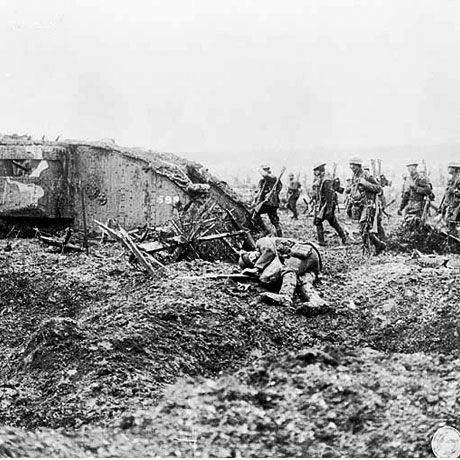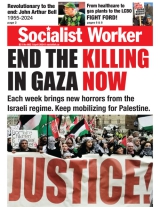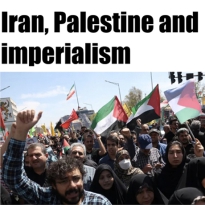Features
You are here
How World War I was stopped

November 10, 2018
This November 11 will mark 100 years since the end of the first world war and in Canada we will be inundated with stories of heroism and national pride. The Canadian government will, no doubt, laud the killing fields as the crucible within which Canada became a nation. The battle of Vimy Ridge – a fight that killed 3,598 and wounded 7,004 Canadian soldiers for a largely useless ridge line – will be given specific treatment as a key moment in Canadian history.
The realities of the war – more than 100 years past – are now obscured by official histories and Canadian history vignettes. As Ian McKay and Jamie Swift state in their book, The Vimy Trap: Or, How We Learned to Stop Worrying and Love the Great War, the commemorations of the battle only began in earnest well after the soldiers who participated in it had died. It was during the Cold War militarist build up that the battle became a centerpiece in Canadian history textbooks.
Governments from all of the belligerent nations have tried to build a new narrative about the war as a noble quest for peace and democracy. But nothing could be further from the truth.
One needs only look at the writing, poetry and art from the soldiers themselves to see the brutality of the war from the perspective of the troops. And although they rarely get any air time in the current official histories, they offer a glimpse of what really happened both during the war and what really ended the conflict.
Sigfried Sassoon, a British soldier wrote a letter which was read in the House of Commons which spoke for the millions of soldiers in the trenches, “I have seen and endured the sufferings of the troops and I can no longer be a party to prolong these sufferings for ends which I believe to be evil and unjust.”
Imperialist war
This was a war started by the main capitalist powers in Europe to try and gain control of the resources and lands of their rivals. As many as 10 million working people died in an industrialized slaughterhouse that served no purpose at all.
As socialist historian Chris Harman states, “The rival imperialisms which had emerged as each capitalism tried to solve its own problems by expanding across state boundaries now collided right across the world. Economic competition had turned into competition for territories, and the outcome depended on armed might.”
This competition between states is a central feature of capitalism which needs to accumulate wealth at all costs.
Revolts
While the war was greeted with some enthusiasm by the general populations at the start, the prolonged struggle resulted in a growing anti-war and revolutionary sentiment. Soldiers from both sides of the conflict began to identify more with the other poor infantrymen in the opposite trenches rather than with their own rulers and officers who sat in chateaus sipping cognac as they sent tens of thousands to a grisly death.
The Christmas truce in 1914 scared the officers and rulers on both sides of the conflict. German and British troops decided to end the hostilities themselves and came out of the trenches to share drinks and play a game of soccer. Although this is now seen as a bold and tender moment in history, it was viewed very differently at the time. The British declared that they would kill any soldiers, German or British if they came out of the trenches to engage in this kind of civility again.
The first major mutinies started in April 1917 when a full 68 divisions of French troops refused to return to the front. They were attacked and 50 of the leaders of the mutiny executed. But revolts spread quickly. More than 100,000 British soldiers mutinied in Boulogne before the generals executed the leaders of the rebellion. German sailors mutinied and refused to go to sea to fight the British navy. Indeed, the rebellions in Germany, both by soldiers and workers reeling from the deprivation caused by the war, became so widespread that there was fear of a revolution building among the German rulers.
Russia
And in Russia ending the war, which had cost some 1.8 million lives, became a central demand of the revolutionary movement. The Bolshevik party was one of the few socialist groups that was opposed to the war from the beginning. It was this clarity that allowed the Bolsheviks to gain influence among the soldiers themselves. The result was that the October revolution was largely bloodless. There were few army units left to send to try and defeat the revolutionary forces in Russian cities. Most had been won over to the revolution.
At the Zimmerwald conference in Switzerland in 1915, Russian Bolshevik leader Lenin spoke about the nature of the war.
“The European and world war has the clearly defined character of a bourgeois, imperialist and dynastic war...setting the wage slaves of one nation against those of another so as to benefit the bourgeoisie–these are the only real content and significance of the war.”
After the revolutionary victory on October 25, 1917 Russia declared that it would end hostilities even if that amounted to a defeat at the hands of the Germans. The Bolsheviks called “upon all the belligerent nations and their governments to start immediate negotiations for peace.” They then signed the treaty of Brest-Litovsk which gave the Germans significant lands in Poland, Ukraine and the Baltic states and officially pulled the Russians out of the war.
Unfortunately, the other imperial powers were unwilling to talk peace. They were terrified that any concession would result in a weakening of their position in the global imperial pecking order.
As a result, they killed more than one million more people between the Russian call for peace and the official end of the war in 1918.
Legacy
The stark brutality of WWI was to call into question the very nature of the capitalist system for workers throughout the world. Simultaneously, the Russian revolution provided the inspiration for millions who opposed the barbarity of the system.
The next few years were filled with revolutionary uprisings from Hungary to Austria to Italy to Germany. Unfortunately, they were not successful, which left the Russians isolated and under attack.
The ruling classes in the belligerent countries even put aside their own animosity towards each other – despite years of describing their opponents as inhuman killers – and joined forces to attack Russia.
Their fear of a worker-led government that refused to engage in imperial slaughter was greater than their hatred of a rival ruling class.
The commemorations of the war this year will be full of flowery language and calls to patriotism. It is crucial to remember that a key factor in the war’s end was the revolt of the troops who saw that the real enemy wasn’t the workers in the opposition trench, but the capitalists and generals that prolonged the slaughter for their own personal gain.
Section:
Topics:










